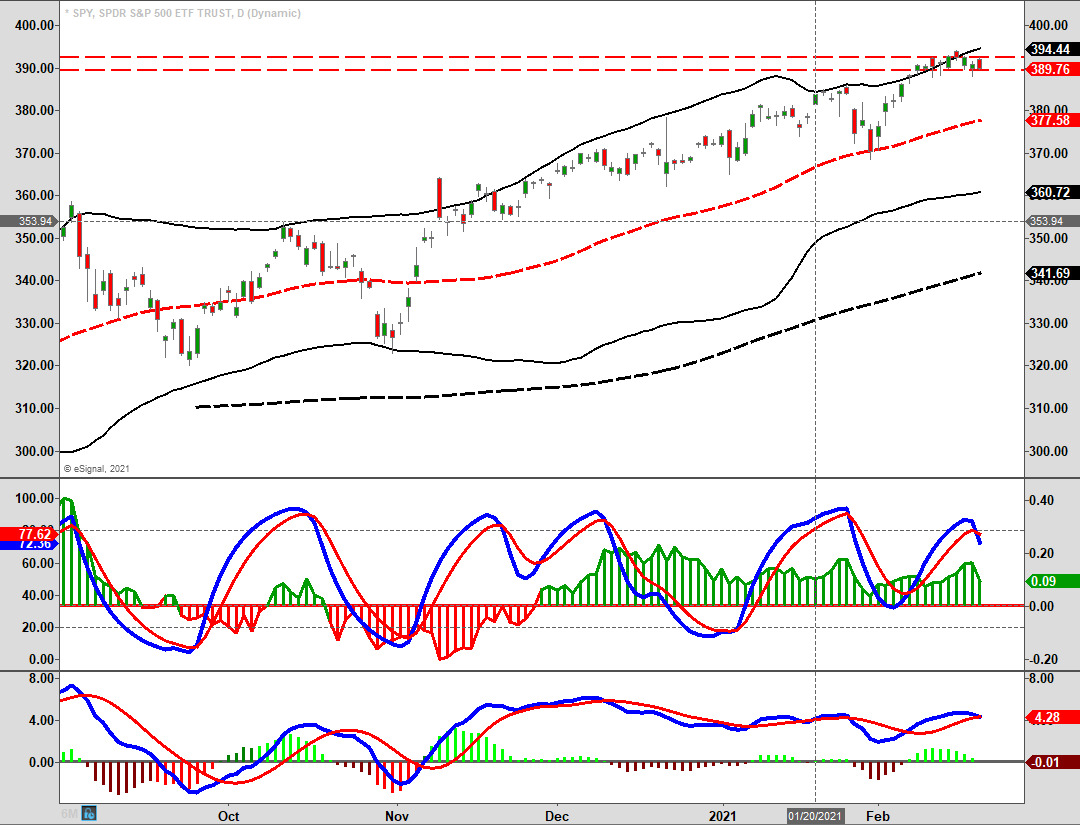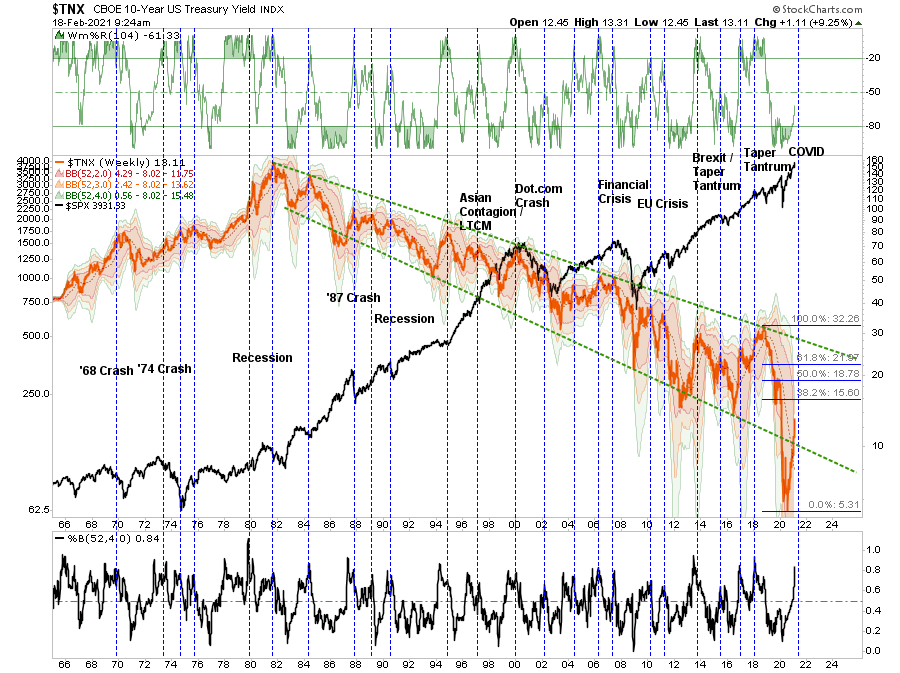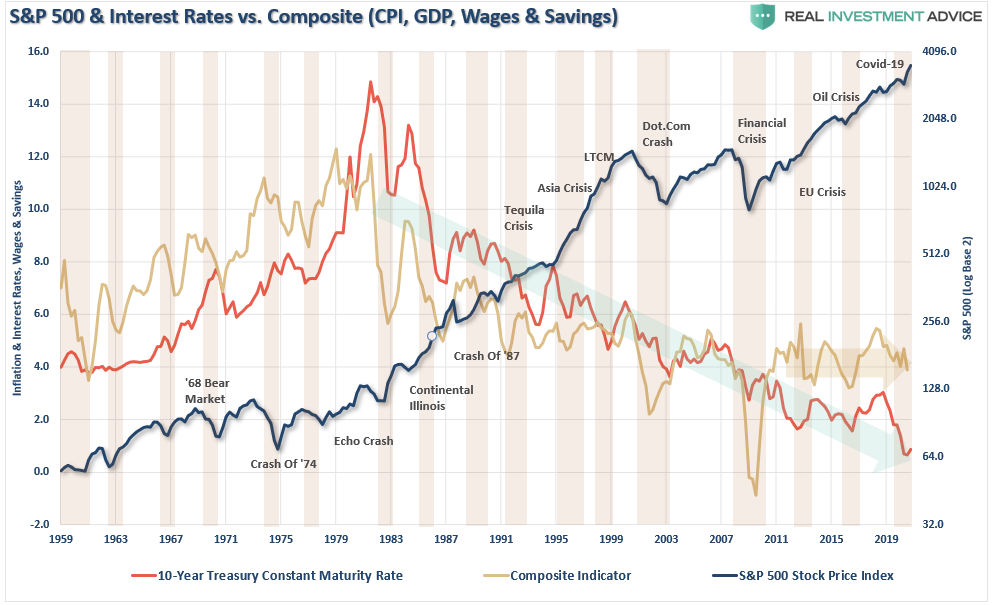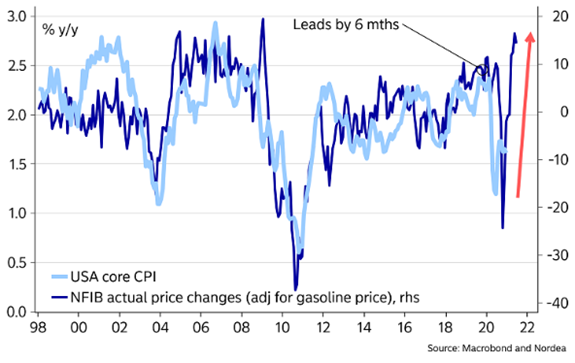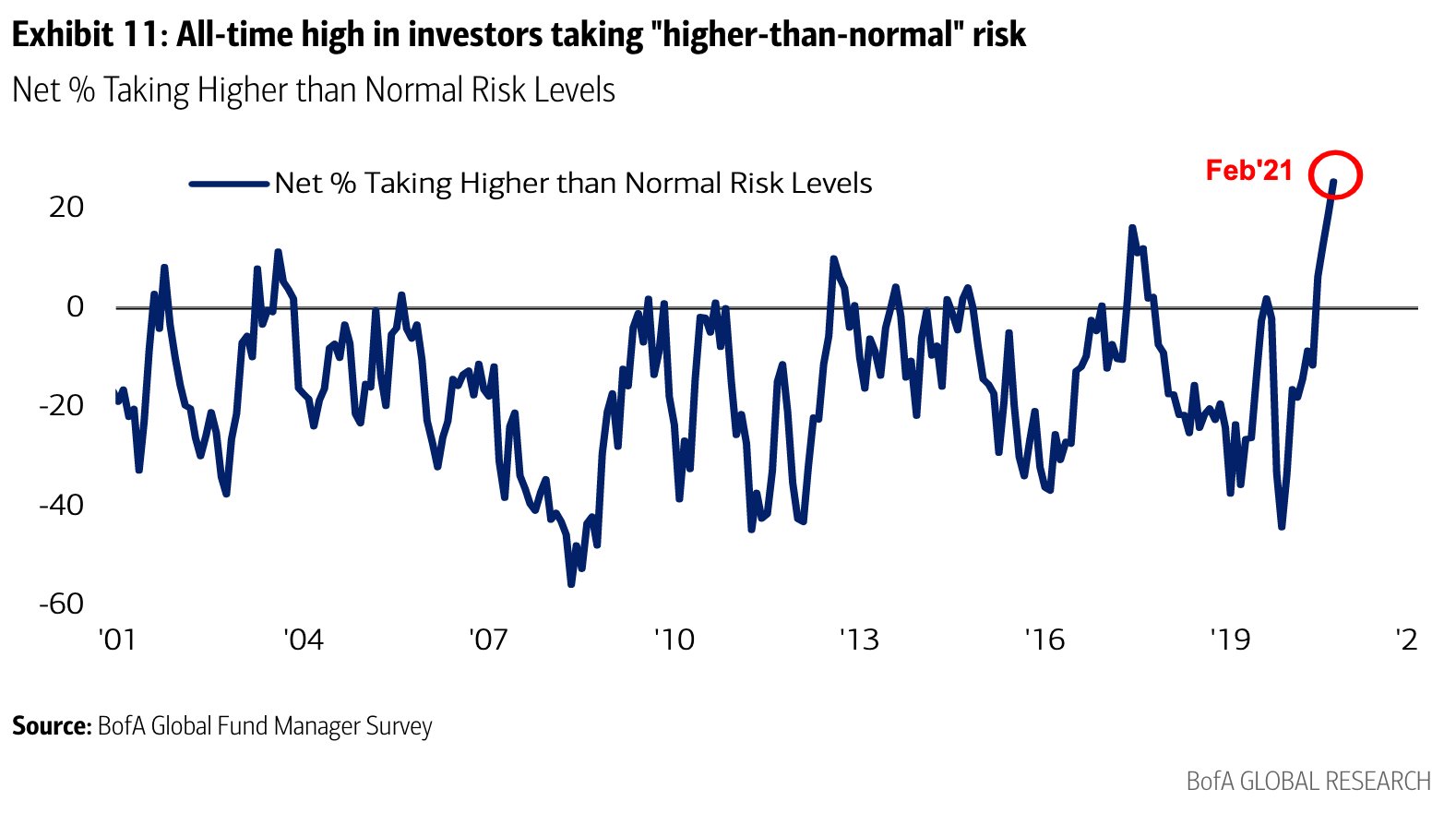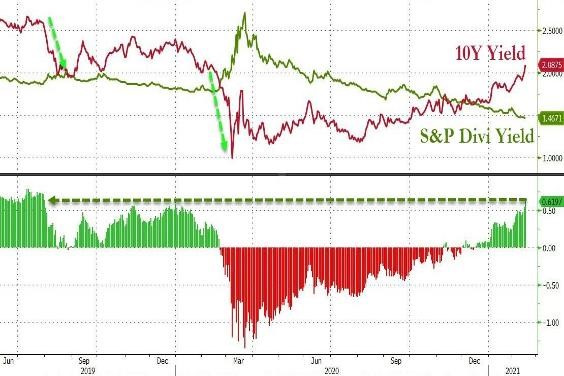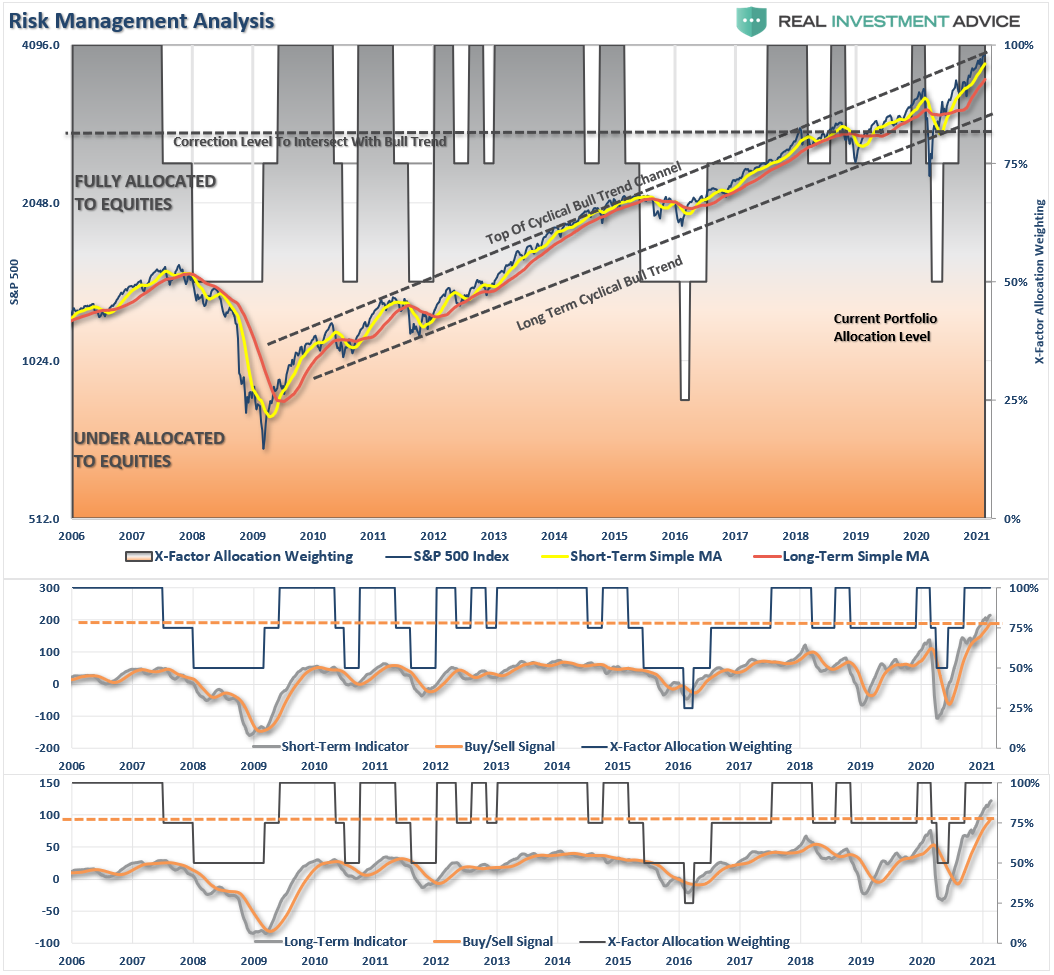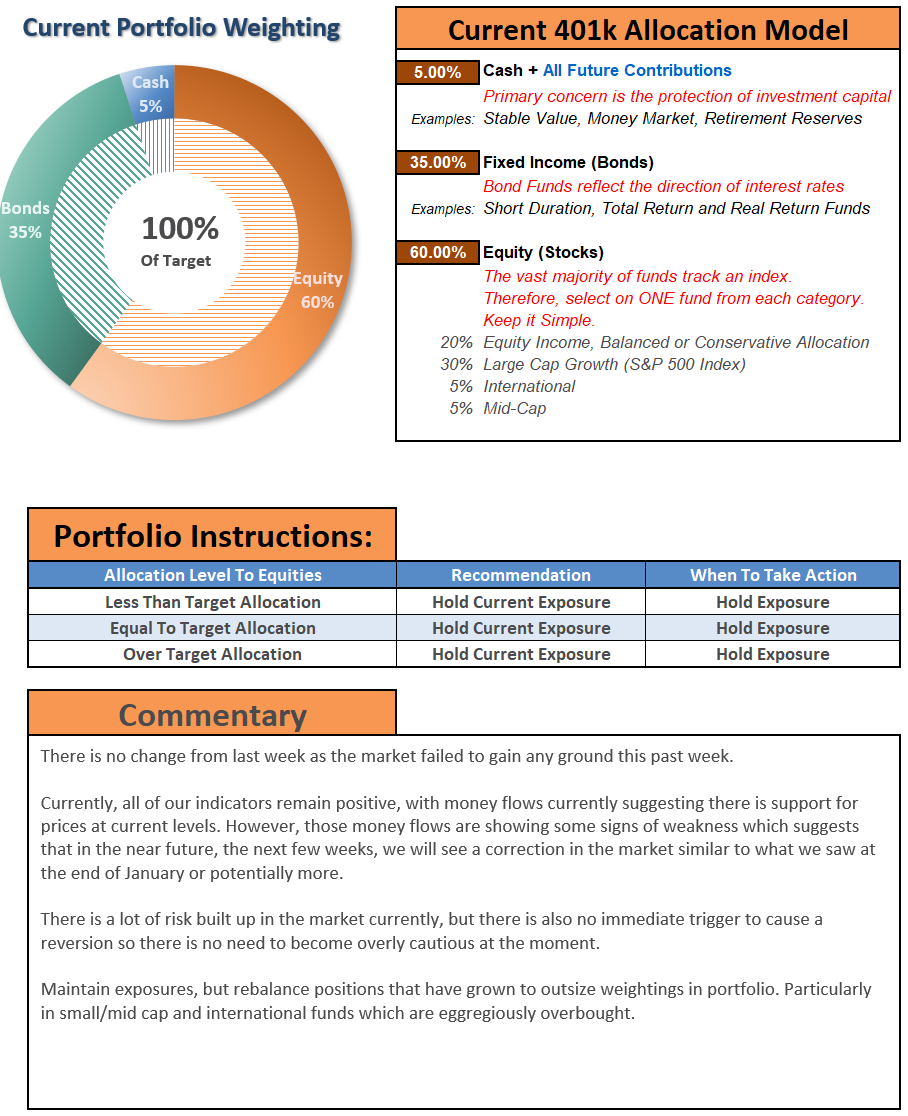The Markets May Be Starting To Worry About Rates
This past week was interesting.
I live in a suburb of Houston, Texas, and was one of the 2.6 million that lost power and water for several days. It was an exciting adventure in survival as our house’s temperature dropped below freezing and ice formed on our emergency water supply in the bathtub.
However, between sitting in cars to charge the laptop and phone batteries and warm up a bit to figuring out how to make coffee on a gas stove, everyone made it through. The lesson we all relearned during this event is not to take for granted even the smallest luxuries in life or each other.
This week’s newsletter will be abbreviated as I still don’t have access to everything just yet. However, by next week, we should be back to normal.
Market Review & Update
I previously stated that with the market already trading 2-standard deviations above the 50-dma, further upside could be limited. Such was the case as markets struggled all week to hold gains in a very narrow range. (Horizontal dashed lines.)
Currently, the money flow signals remain positive, but “sell signals” did trigger as of the close on Friday. While the money flow itself remains strongly positive, the “sell signals” continue to suggest downward pressure on prices currently. However, given the more extreme overbought and bullish conditions, there is a risk of a deeper correction over the next few weeks.
Importantly, as discussed last week, while we will certainly warn you of when our indicators turn lower, the problem remains two-fold:
- The indicators don’t distinguish between a 5% correction and a 20% drawdown; and,
- Secondly, the corrections often occur so quickly you don’t have much time to decide just how defensive you need to be.
In other words, it is often advantageous to pare risk by “leaving the party a little early.”
Are Rates About To Cause A Problem
The question we need to answer is why the market has been struggling as of late. As we touched on last week, investors may be starting to factor in the twin threats of higher inflation and interest rates. To wit:
“With an economy pushing $85 trillion in debt, the entire premise of the ‘consumption function,’ as well as ‘valuation justification’ for the stock market, is based on low-interest rates. However, that is rapidly ending as the rise in rates is now approaching a “danger zone” for the markets.”
As discussed in our #Macroview report yesterday, interest rates are rapidly approaching the 1.5% to 2.0% barrier, where higher payments will collide with disposable income. Historically, such has not ended well for markets.
The rise in interest rates is much more problematic than most suspect. Higher interest payments reduce capital expenditures, threatens refinancing, and spreads through the economy like a virus.
As noted by Laura Cooper yesterday:
“The writing may soon be on the wall for the buy-everything-but-bonds rally, with focus on inflation fears and subsequent Fed tightening. Yet it’s rising real yields that might prove to be the ultimate stumbling block for the risk rally.”
Little Margin For Error
Higher rates also quickly undermine one of the critical “bullish supports” of the last decade:
“In a heavily indebted economy, increases in rates are problematic for markets whose valuation premise relies on low rates.”
“Each time rates have ‘spiked’ in the past; it has generally preceded a mild to a severe market correction.
As is often stated, ‘a crisis happens slowly, then all at once.’
So, how did the Federal Reserve get themselves into this trap?
‘Slowly, and then all at once.’”
When combined with higher inflationary pressures due to stimulus injections, such becomes problematic. Higher borrowing costs and inflation compresses corporate profit margins and reduces real consumption as wages fail to increase commensurately.
While the Fed continues to suggest they will let “inflation run hot” for a while, the problem is that the real economy won’t. The impacts of higher payments and costs will derail consumptive spending very quickly, given the real economy is still massively dependent on “life support.”
Equally problematic is when the stock market suddenly realizes that higher rates have derailed a primary thesis of overpaying for value.
Risk Appetite Is Extreme
It seems as if with each passing week, we have continued to point out levels of exuberance either rarely or never, seen historically. This past week continues to see increasing levels of exuberance on many fronts.
One that I will discuss more in Monday’s blog is the fact that “no one is bearish.” Of course, that may be reason enough to be concerned.
As Bob Farrell once noted:
“When all experts agree, something else tends to happen.”
We must consider two issues.
The first is that current levels of speculation have increased the risk of a more extreme reversion. As physics’ fundamental laws suggest, a rubber-band stretched to its limit will experience a move of equal intensity in the opposite direction.
The second problem is the demise of the T.I.N.A. (There Is No Alternative) trade.
“The problem today is that the relationship between the 10 year US note yield and the S&P dividend yield has reversed. With risk-free rates of return rising, the 10 year US note now does provide an alternative – especially with the S&P dividend yield plummeting.” – Doug Kass
When “risk” becomes realized, there is now a “safe” alternative.
The shift will likely not be subtle.
Portfolio Update
From a portfolio management perspective, we have started to raise cash and reduce our equity risk somewhat. Our bond portfolio now has a very short duration, and high cash levels are acting as an early hedge against volatility.
We are not getting overly aggressive on hedging risk just yet as the money flow indicators, as shown above, remain supportive. However, that signal is beginning to get more extended, and the market is starting to show early signs of deterioration.
As I stated in the open, sometimes we need to act in advance of the correction. Such is particularly the case when there is excess speculation that can lead to very sharp single-day declines that make it extremely difficult to take appropriate actions amid a “panic-driven” sell-off.
Conclusion
If you missed this week’s post on Howard Marks on “speculative manias,” it is a good analysis of what we are dealing with currently.
Importantly, it is essential to remember that portfolio management is not about ALWAYS being right. It is about consistently getting “on base” that wins the game. There isn’t a strategy, discipline, or style that will work 100% of the time.
“The biggest investing errors come not from factors that are informational or analytical, but from those that are psychological.” – Howard Marks
The biggest driver of long-term investment returns is the minimization of psychological investment mistakes. As an investor, it is merely your job to step away from your “emotions” for a moment. Look objectively at the market around you. Is it currently dominated by “greed” or “fear?” Your long-term returns will depend not only on how you answer that question but how you manage the inherent risk.
Whether it is Paul Tudor Jones or any other great investor throughout history, they all had one core philosophy in common; the management of investing’s inherent risk.
As many of those found out during the Gamestop saga:
“If you run out of chips, you are out of the game.”
THE REAL 401k PLAN MANAGER
A Conservative Strategy For Long-Term Investors
Model performance is a two-asset model of stocks and bonds relative to the weighting changes made each week in the newsletter. Such is strictly for informational and educational purposes only, and one should not rely on it for any reason. Past performance is not a guarantee of future results. Use at your own risk and peril.
Disclaimer: Click here to read the full disclaimer.


